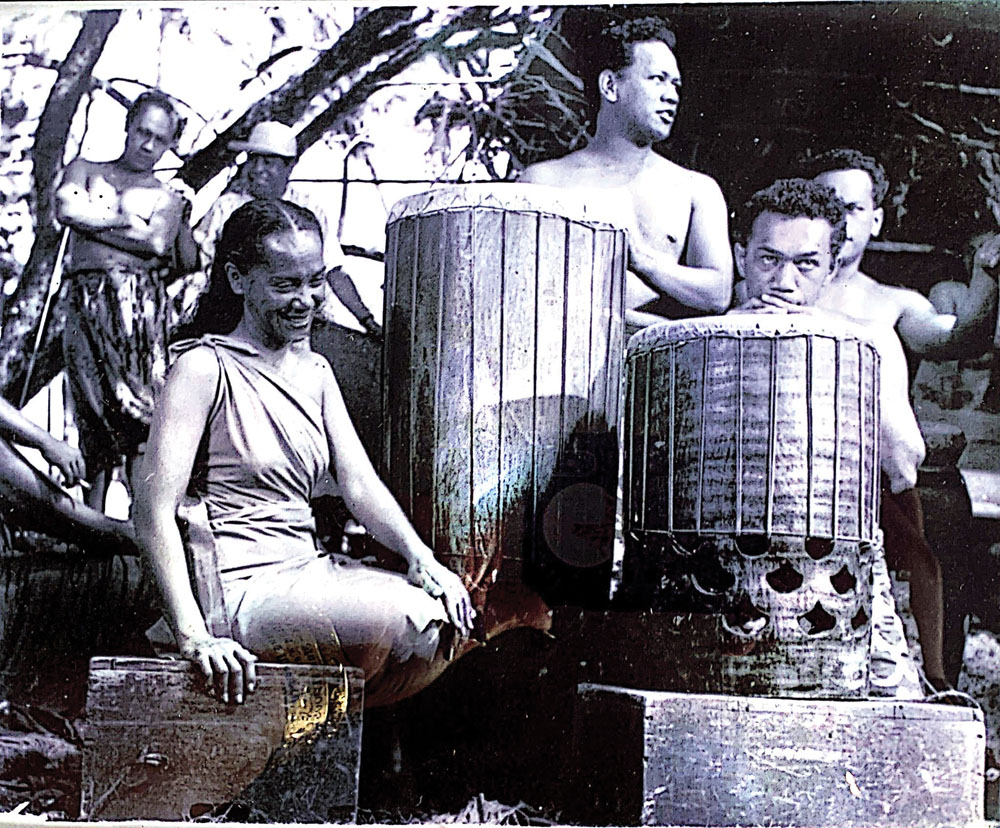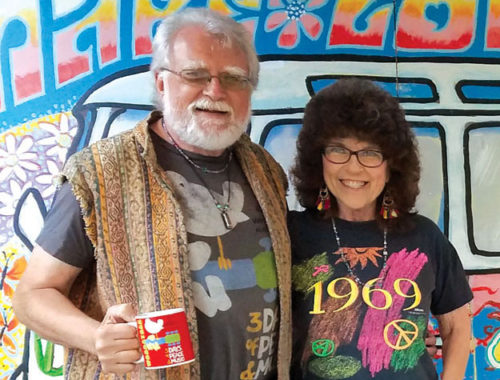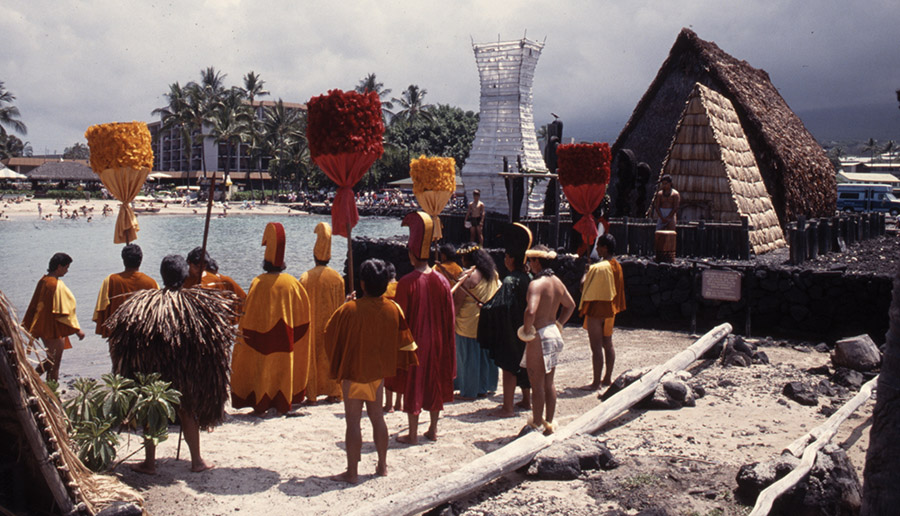
Ahu‘ena Heiau: “Malama i Ko Kākou Ho‘olina”—Preserving Our Past
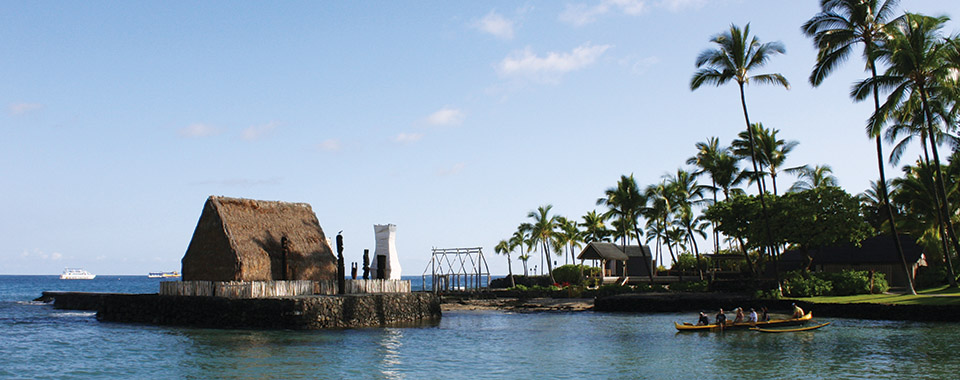 By Fannie Narte
By Fannie Narte
“Ahu‘ena Heiau is probably the most significant historical site in the State of Hawai‘i because the things that happened there set the foundation for the Hawai‘i as we know it today.”
Tom Hickcox, President and Director, Ahu‘ena Heiau Inc.

Ahu‘ena Heiau at Kamakahonu is located on the grounds of the Courtyard King Kamehameha’s Kona Beach Hotel in Kailua-Kona. On December 29, 1962, it was designated a National Historic Landmark, and on July 17, 1993, it was listed in the Hawai‘i State Register of Historic Places.
To appreciate Ahu‘ena’s importance, it is helpful to step back in time to discover how certain events shaped Hawai‘i’s future and how it affected the lives of its people. An understanding of the people’s natural connection to the ‘āina (land), and their reverence and appreciation for the mana‘o (knowledge) shared by the ancestors and kūpuna (elders) are also noteworthy.
“Ahu‘ena” means “altar of fire”
Casey Ballao, Director, Ahu‘ena Heiau Inc.
Casey says: “Hawaiians believed that when the sun first peeks over Hualālai Mountain, its initial rays touch ground at Ahu‘ena. This alignment is imperative to the Hawaiian people. As the sun continues to rise high in the sky and the day slowly turns to night, it shines upon Kalake‘e as it makes its journey back to Hualālai. ‘Kalake‘e,’ a place of light, is where another historical site stands, the Mokuaikaua Church. Our ancestors and kūpuna understood these alignments.”
The Center of Political Power
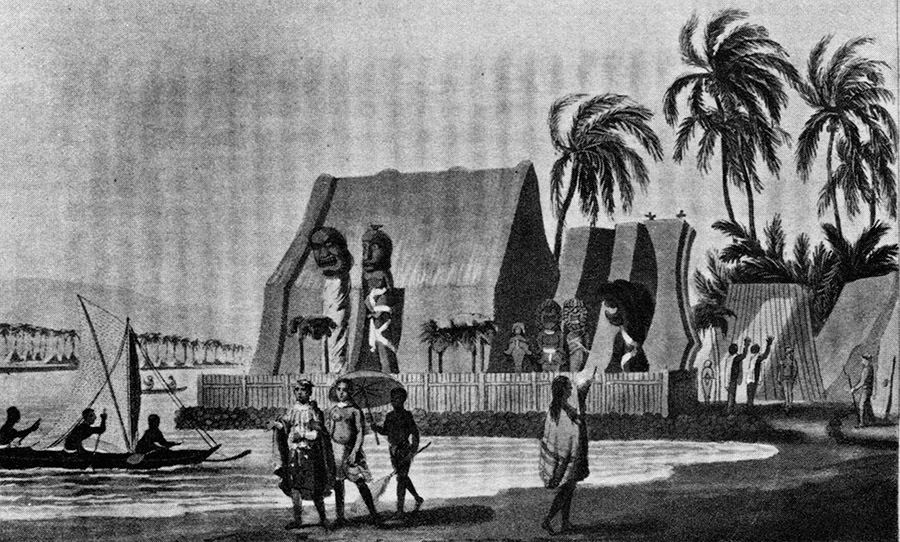
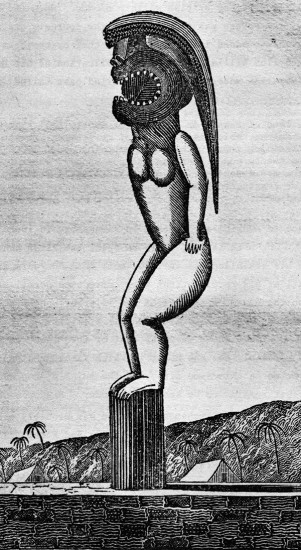
Several major events took place at Ahu‘ena Heiau, which made it an important landmark. It was the place of government during the reign of King Kamehameha I, and it was the place of his death. It was also the place where Kamehameha’s son, Liholiho, was educated for his future role as the next king. In addition, the decision to allow Christian missionaries to begin their work and the decision to break the kapu system, a system based on an ancient code of conduct, were made at Ahu‘ena.
In 1810, two years before Kamehameha returned to Hawai‘i Island, this brilliant king and fierce warrior had accomplished the amazing feat of unifying all of the inhabited islands of Hawai‘i under his rule. This was a time of peace, celebration, and prosperity.
When Kamehameha left O‘ahu in 1812 and established his royal complex at Kamakahonu, the Ahu‘ena Heiau became the piko (center) of the political power in the Hawaiian Kingdom. It was there that Kamehameha met with his advisors and conducted the Kingdom’s affairs. In addition, Liholiho, the heir apparent, received his training there. John Papa ‘Ī‘ī, an attendant of Liholiho, said: “Whenever there was a meeting in the Ahu‘ena house in the evening, the king instructed the heir carefully as to how to do things, describing the lives of former rulers. Thus, Liholiho learned the results of abuse and disregard of chiefs and commoners and about farming and fishing and things of like nature.” (Barrere 9)
King Kamehameha’s Death
Approximately seven years after his arrival at Kamakahonu, King Kamehameha I died. His death and several significant events that followed had a profound effect on the future of the Hawaiian Kingdom and its people.
On the day of Liholiho’s inauguration, “Queen Ka‘ahumanu, the favorite wife of Kamehameha I, addressed him saying, ‘E ka lani, I tell you the will of your father: here are the chiefs; there are the men of your father; there are your guns; here is your land. But we two are to share the rule over the land.’” (Barrere 27)
With this statement, Ka‘ahumanu assumed the position of Kuhina Nui (Premier), which made her a co-ruler with Liholiho.
Upon the death of an ali‘i (chief), it was the practice to temporarily set aside the “eating kapu,” a rule that required the separation of the sexes in food preparation and eating. After a certain period of time, the new ruler would reinstate the “eating kapu,” and the traditional government would resume. (Barrere 33)
However, this was not the case with Liholiho.
The change of power brought political unrest. A dispute regarding the proposal of the abolition of the kapu system divided the Kingdom. Liholiho’s cousin, Chief Kekuaokalani, and his followers fought against the abolition while those who were for the abolition were “headed by the most influential women in the kingdom—Keōpūolani, Liholiho’s mother and highest ranking chiefess of the ruling family, and Ka‘ahumanu.” (Barrere 33)

The Kapu System is Abolished
Liholiho joined the supporters of the abolition, and the symbolic act of ending the ancient kapu system was performed. Liholiho and Ka‘ahumanu “broke the ancient kapu system, a highly defined regime of taboos that provided the framework of the traditional Hawaiian government. Word was sent throughout the kingdom that the ‘eating kapu’ had ended, and with it went the old religious structure, as well. Heiau were burned and images were destroyed.” (Barrere 33-34)
Sometime in April of 1820, the first missionaries from New England were granted permission to begin their proselytizing.
In the course of one year, the people of the Kingdom of Hawai‘i lost their beloved king, a ruler who brought unity and stability, and they also suffered the societal effects brought about by the abolition of the kapu system, including the “old religion,” which paved the way for the introduction of a new religion. These events caused a trajectory that drastically changed the Kingdom’s hierarchical structure. The “old way” had ended.
The Reconstruction of Ahu‘ena Heiau
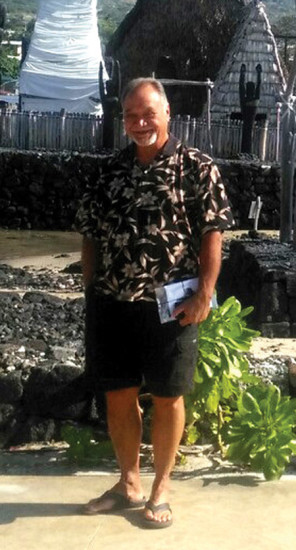
Tom Hickcox said that the inception of the idea to reconstruct the Ahu‘ena Heiau began sometime during the 1970s. Approximately 150 years after the death of Kamehameha, concerned members of the community were moved to action. They understood the importance of the “pile of rocks” where the Ahu‘ena Heiau once stood. Their desire to preserve this national treasure led them to organize the site’s reconstruction.
Numerous meetings were held and ideas were exchanged. Finally, in November of 1975, members of the community, consultants, and archaeologists joined forces with Amfac—the owners of the site at that time—and Bernice P. Bishop Museum to begin the reconstruction.
This was an enormous task and several experts were consulted to ensure that all the work was properly done. Fieldwork began on November 13, 1975. From December 1975 to January 1976, the “four walls of the heiau platform were constructed to its finished height, archaeological excavation was begun, wall foundations were stabilized and the platform was reconstructed.” (ahuena.org)
When the platform was completed, work began on the five structures for the site: Hale Mana, Hale Pahu, Anu‘u, Hale Nana Mahina‘ai and Hale Kia‘i.
Whenever possible, authentic building and construction materials were used. These materials were collected from various locations throughout Hawai‘i Island and Maui. Some of the materials collected were ‘ōhi‘a, waiawī (strawberry guava), and breadfruit timbers, sugar cane thatch, banana sheath, lauhala leaves, and ‘ama‘u (fern). More than 500,000 ti leaves were collected and processed.
Work continued over the next two years, and in March 1977, the reconstruction of the Ahu‘ena at Kamakahonu was completed. After many years of work and toil, what began as a desire expressed by the kūpuna and joined by the kōkua (help) of the community, the Ahu‘ena Heiau at Kamakahonu stands with all its history, makana (a gift) for future generations.
Ahu‘ena Heiau Inc.
“Malama I Ko
Kakou Ho‘olina”
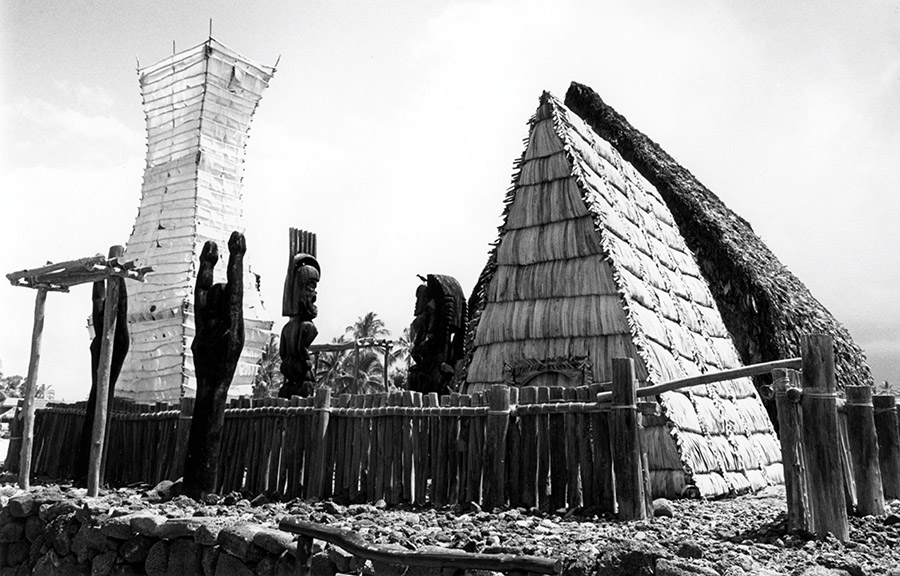
Although Ahu‘ena is located on the property of the Courtyard King Kamehameha’s Kona Beach Hotel, the kuleana (responsibility) for its care and maintenance belongs to the officers and directors of the Ahu‘ena Heiau Inc. On May 11, 1993, approximately 16 years after the reconstruction of Ahu‘ena was completed, Ahu‘ena Heiau Inc. was formed and incorporated as a Federal 501C3 nonprofit corporation. “Its purpose is to create and operate a program for the preservation and maintenance of ancient Hawaiian structures, foundations and burial sites, and to promote the appreciation of Hawaiian history.” (ahuena.org)
Its current officers are Tom Hickcox, President and Director; Jacqueline Awa, Treasurer and Director; Alana Yamamoto, Secretary and Director; and Directors Casey Ballao, Kealoha Kaopua, Kalei Villacorte, and Ross Wilson, Jr.
2011 Tsunami Damage
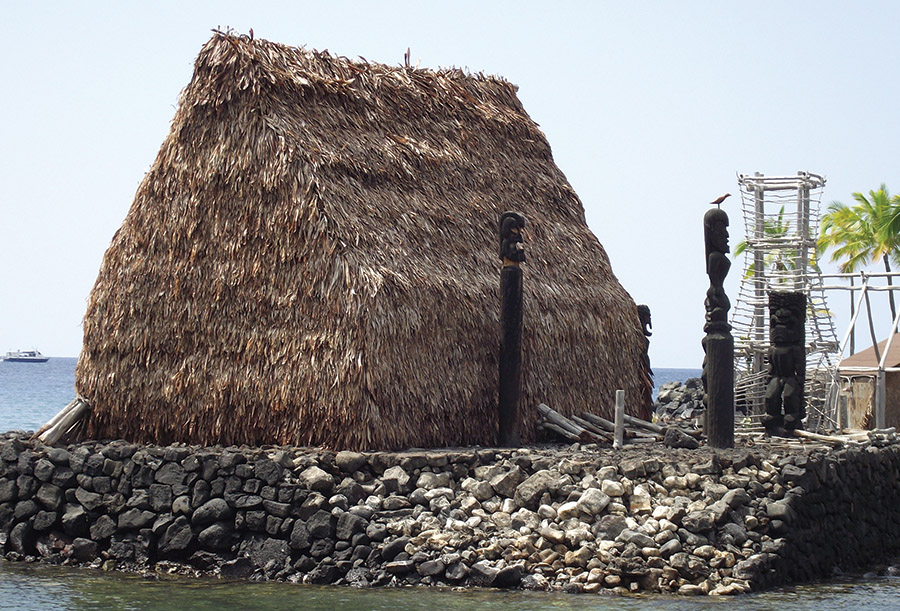
On March 11, 2011, “The Ahu‘ena Heiau rock platform base, perimeter wooden fencing, Anu‘u Tower and an uprooted ki‘i (carved statue) were damaged from the tsunami. The Ahu‘ena Heiau, Inc. surveyed the damage, consulted the State Historic Preservation Division, worked closely with a qualified historical site restorations coordinator, and completed all necessary repairs.” (ahuena.org)
The organization continuously seeks grants and donations to help them maintain the site. Donations are always welcomed and appreciated.
The Five Structures at Ahu‘ena Heiau Today
The Hale Mana (house of spiritual power) was a place for prayer, a meetinghouse for discussing Kingdom affairs, and a school for Liholiho.
The Hale Pahu (drum house) sheltered the great ceremonial drums of the temple. Anu‘u, the “oracle tower,” is where the high priest received and proclaimed answers of the gods to his petitions.
Hale Nana Mahina‘ai (house to see the gardens) is where Kamehameha I ordered the cultivation of the agricultural field named “kūāhewa” in the uplands of North Kona. He was able to monitor the land and sea activities from this vantage point.
The fifth structure is the Hale Kia‘i (guard house).
Ahu‘ena Heiau is our Kuleana
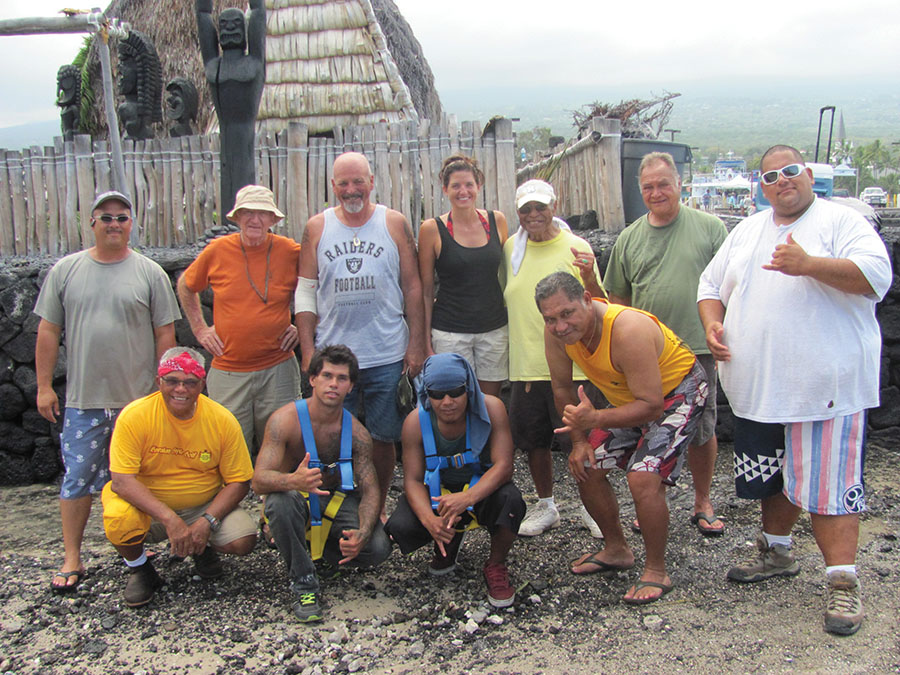
Hawai‘i is culturally rich. Ahu‘ena Heiau is an important historical site because of its location, because of the life-changing events that occurred, and because of the people who lived and worked there.
Ahu‘ena was a place of alignment to the sun and the sun’s energy and was significant to the Hawaiian people. It was a chosen place.
The ancestors understood the alignment and the importance of Ahu‘ena Heiau; therefore, it was chosen as the center of political power. Later the kūpuna understood the alignment and the importance of Ahu‘ena; therefore, they chose to reconstruct the site. ❖
“Malama I Ko Kakou Ho‘olina”—Preserving our Past
“The care of Ahu‘ena Heiau is our kuleana.
Once you hear the story, the kuleana just comes.
We, as people, have to assume that kuleana.”
Tom Hickcox

For more information about Ahu‘ena Heiau Inc.: Ahuena.org
Black and white photos by Wayne Levin
Photos courtesy Ahu‘ena Heiau Inc.
Contact writer Fannie Narte: info@fannienarte.com
Resources:
Ahuena.org
Ballao, Casey. Personal Interview. 23 Dec 2013.
Barrere, Dorothy. Kamehameha in Kona: Two Documentary Studies. Honolulu: Bernice Pauahi Bishop Museum, 1975. Print
Hickcox, Tom. Personal Interview. 17 Dec 2013.
